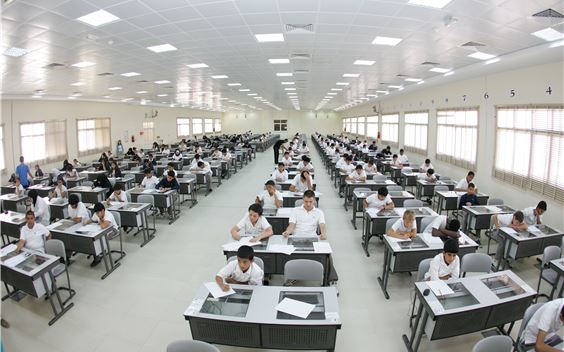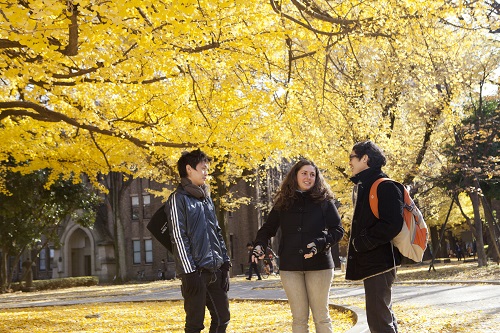Scranton’s Trolley Historical past and the Electric powered Metropolis Trolley Museum

1. The Horse-Drawn Trolley:
While improvement of the steam locomotive and the progressive laying of track enabled the distances amongst rising towns to be protected in ever-decreasing time and augmented their development by funneling people, employees, and components in the course of the mid-19th to early 20th century period, there was little intra-town transportation, except, of program, for the horse and several wagons and buggies it pulled. What was required was some form of brief-array, very low-potential motor vehicle, accommodating a number of dozen, with sprightly pace to protect distances of amongst a few blocks and a couple of miles. But, not like the trains, coal proved sooty and unsuitable for this sort of road negotiation.
Toward this conclusion, albeit however utilizing horsepower, the Honorable A. B. Duning, David R. Randall, George Tracey, A. Bennett, and Samuel Raub were granted a charter on March 23, 1865 to set up the People’s Street Railway, which related downtown Scranton with the encompassing Hyde Park space with hourly assistance in just about every direction.
The Scranton and Providence Passenger Railway Company, plying its own route as of March 27 of the subsequent year, mimicked its operation, but was subsequently obtained by its former competitor and merged into a solitary firm. Everyday provider, from Scranton to Providence, was delivered each hour at a 10-cent fare, although Sunday functions have been contingent on need designed by these wishing to travel to church.
Regardless of the shortened travel moments, schedules had been hardly carved in stone. In fact, the trolley cars and trucks have been tiny, with two opposing benches, heat was nonexistent in wintertime, weather conditions impacted functions, and selected stops were in no way established, leaving the “flag and board” process to ascertain the ride’s interruptions.
Reverse-course travel necessary the unhitching of the mule, the human-driven force of the auto after it had been secured on a turntable, and then the re-hitch, just before a route-retracing to its origin.
Progress necessitated get. Drivers soon wore uniforms, heavily traveled lines essential conductors for fare collecting and driver signaling, designated stops ended up founded, and trolley fleets were expanded.
The method, nevertheless, was less than successful, because horses drained and needed to be fed and polluted the streets right after they have been, and the ratio of mules to cars and trucks was a thing like seven or eight to 1.
Incorporating to this conundrum was illness. What could be thought of the black plague for animals happened in 1872 when the “Wonderful Epizootic” distribute from Canada to Louisiana, professing the lives of some 2,300 horses in a three-week period of time in New York on your own, severely impacting the Scranton streetcar technique, which depended upon them.
2. The Electrical Trolley:
Traveling to important US and European metropolitan areas in which electric powered-run trolley operations had been experimentally, but unsuccessfully attempted, Edward B. Sturges, who believed that this resource would exchange the four-legged type, shaped the Scranton Suburban Railway Enterprise, contracting with the Van Depoele Electric Manufacturing Organization of Chicago to construct the Eco-friendly Ridge Suburban Line and concluding an settlement with the Pullman Automobile Business for its trolleys.
Because electrical vehicles experienced under no circumstances been made, they closely mirrored people suited to horses, with 4 wheels and opposing and open up platforms, whilst their plush bench seats, polished mahogany interior partitions, blind-coated glass home windows, and reflector oil lamps furnished a determined diploma of convenience.
Development was the very first stage. Conversion was the second-in the Van Depoele manufacturing facility for electric powered installation, necessitating the enclosure of the front platform with doorways to home the motor and management gear. Gears and chains connected the motor shaft to the front axle and six incandescent light bulbs ran all through the inside.
Electric powered electric power was drawn from an overhead speak to wire.
System implementation required center street grading, energy line link, and ability station development, all of which started on July 6, 1886.
Like the nucleus of an atom, the revolutionary trolley corporation selected the intersection of Franklin and Lackawanna avenues as the origin of its route, given that it served as Scranton’s transportation hub, with all horse-drawn strains converging there, and its proximity to very long-assortment railroads, such as the Delaware, Lackawanna, and Western, the Central Railroads of New York and New Jersey, and the Ontario and Western. On top of that, it was the coronary heart of the city’s organization and theater districts.
The two-and-a-50 percent mile line terminated on Delaware Avenue, in which a turntable facilitated the reverse-direction run.
Immediately after building, which was done on November 29, 1886, the trolley autos ended up delivered by the Delaware, Lackawanna, and Western Railroad, which transported them on flat autos, and then, in an homage to the electrical power they were being replacing, ended up pulled the closing length by horses on the rails that had been laid for their goal, before getting transferred to Franklin Avenue monitor.
Initiated by a hand handle lever movement by Charles van Depoele, trolley motor vehicle quantity four, the country’s 1st electrically-run one particular, inched away at 14:30, community time, touring in the route of Franklin and Spruce streets and earning Scranton the title of “initially electrical city.”
In comparison to its horse-drawn counterparts, it effortlessly accelerated, without the need of animal-induced lurch, and its inside, for the initially time, was lit by the same electricity source which propelled it.
Motor vehicle number two quickly partook of the inaugural operation right after a nail, attracted by magnetic existing, connected by itself to the armature, rendering it unusable until repairs were being manufactured.
The total, 2.5-mile route was productively covered the adhering to working day by vehicle quantity 4.
“Following operating by means of snow, ice, and slush, up steep grades and all-around 45-diploma turns the two left and correct,” according to David W. Biles in his book, “From Horse Vehicles to Buses: A Glance Again at Scranton’s Town Transit Heritage” (Electric Town Trolley Museum Association, p. 21), “car or truck range 4 achieved the turntable in Environmentally friendly Ridge. Following turning the car, a return journey was made to Franklin Avenue at Lackawanna Avenue. The procedure around the full line was viewed as a entire achievements.”
That accomplishment, unnecessary to say, served as the catalyst to several other strains, together with the Valley Passenger Railway Enterprise, the Scranton Passenger Railway Organization, the Nay-Aug Cross Town Railway Corporation, the Scranton and Carbondale Traction Organization, the Scranton and Pittston Traction Enterprise, and the Lackawanna Valley Traction Organization.
Amalgamated and operated beneath the solitary Scranton Railway Company banner by 1900, they left no inch of track unelectrified, changing any used by its horse-drawn predecessors to this know-how.
Because the proliferation of these track connected every single space of the town, which includes numerous tiny coal patch towns, need necessitated greater autos, resulting in the 1897-to-1904 purchase for 35 40-foot-prolonged, dual-close handle trolleys that could operate in either course without the need of requiring turntable re-orientation. They ended up crewed by the two motormen and conductors.
The expansion of this transportation phenomenon can be gleaned by its statistics: working over extra than 100 miles of keep track of with a 183-strong fleet, the Scranton Trolley Firm carried 33 million travellers in 1917. A 1923-established subsidiary, the Scranton Bus Enterprise, offered assistance on an extension to the Washburn Street trolley line.
Symbolizing the pinnacle of trolley design and style, the ten vehicles purchased from the Osgood-Bradley Motor vehicle Corporation of Wooster, Massachusetts, in 1929 showcased leather-based seats and had been dubbed “Electromobiles.”
Reorganized as the Scranton Transit Corporation in 1934 soon after the Insull empire of electrical railways and power organizations, which experienced taken it above nine decades earlier, declared bankruptcy, the originally named Scranton Railway Organization ongoing to operate, but the sunlight was now inching towards the western horizon for it.
Ridership had started to drop and trackless buses, not demanding external power sources, enhanced in recognition. The progressive conversion of traces to bus routes left minimal a lot more than 50 miles of track and a fleet of 100 cars by 1936. Twelve years later on these figures had respectively diminished to 20 and 48.
Historical past, as often happens, comes complete cycle. The way the electric powered trolley had replaced the horse-drawn one particular, so, far too, had it been changed by the gasoline engine. The Greenbridge Suburban Line, the very first to see the then new-fangled service, grew to become the final to relinquish it on December 18, 1954.
3. The Electrical City Trolley Museum:
Positioned in downtown Scranton and sharing both the enormous parking large amount and, in some instances, monitor as Steamtown Nationwide Historic Web-site, the Electric Town Trolley Museum features the customer an opportunity to interpret the city’s rich streetcar historical past and personally examine several of its autos.
“A 50-seat theater,” according to the museum, “and other interesting shows convey to lifestyle the historical past of the extensive community that allowed people of Northeast Pennsylvania to journey 75 miles on trolleys.”
A good introduction to it is the 10-minute movie, “Trolley: The Vehicles that Altered our Towns,” constantly demonstrated in the Transit Theater, which serves as a threshold to the museum’s displays. These involve a sub-station product that demonstrates how electrical electrical power is provided to trolley motors in purchase to operate them and a boardable car or truck, whose flooring minimize-absent permits inspection of its 600-volt immediate current traction motor.
A number of autos have either been restored or are in the course of action of it.
Automobile variety 46, for instance, is a closed, double-conclude, double-truck style and was one particular of 22 crafted in 1907 by the St. Louis Automobile Organization for the Philadelphia and Western Railway, which operated them between the 69th Avenue Terminal in Upper Darby and Strattford.
Operate by four Standard Electric powered 73C motors and touring on 34-inch-diameter rolled steel wheels, it had a 51.4-foot length, a 9.3-foot width, and weighed 82,000 lbs. Manufactured primarily of wooden, but utilizing a metal underbody body, it is an example of the typical, 54-passenger interurban trolleys that have been well-liked in the early-20th century.
Auto 8534, an additional museum exhibit, was the very last of the 535 metal, solitary-finished, single-way varieties created by the J. G. Brill Enterprise for the Philadelphia Immediate Transit Corporation. It can be deemed an current variation of the 1,500 “In the vicinity of-Facet” autos built in between 1911 and 1913. Both equally supplied the the vast majority of trolley support in Philadelphia following Globe War II.
The past such auto, of which only a few keep on being now, was withdrawn from provider in 1957.
An additional museum example is automobile variety 801. A person of 5 ordered by the LVT Enterprise in February of 1912 for the opening of its new branch line from Whales Junction to Norristown in Pennsylvania, it was designed by the Jewett Auto Company of Newark, Ohio.
Its a few-segment inside, emulating the magnificence of steam Pullman passenger automobiles of the era, consisted of a compartment for the motorman, baggage, and a brass spittoon-equipped, adult males-only cigarette smoking space the most important passenger seating segment and a bathroom with an outside consuming fountain, total with a cup dispenser, on the far correct aspect.
The visitor’s trolley working experience can be enhanced with a 10-mile spherical-excursion ride on just one, departing from the wood platform Steamtown Station, where his return-to-period is improved with sights of the railroad yard’s numerous steam locomotives, passenger coaches, and freight autos of yore. The puff of smoke, the odor of soot, the ring of bells, the shrill of whistles, and the clack of tracks are all likely to happen.
Of the two running trolley autos, equally of which are painted maroon to replicate the shade that Scranton’s initial car wore when it inaugurated company back in 1886, number 76, which experienced operated in Philadelphia, was built in 1926 and remained in support for fifty percent a century.
Pole-related to the electric power line higher than it, it ran on a 650-volt immediate present-day motor. It was crewed by equally a motorman and a conductor. A nickel fare permitted all-day travel. Entry was and is by means of a mid-auto doorway.
Its pristinely restored interior functions wicker seats, strap hangers, a brass, fare-registering box, and classic ads, such as for Nabisco’s Uneeda biscuits. Air conditioning consisted of opening the windows in summertime.
Departing Steamtown and achieving 30-mph speeds on some sections, the Electrical Metropolis trolley follows the once 19-mile-extended Laurel Line keep track of, passing the Radisson Hotel, which had been the outstanding Lackawanna Railroad Station till 1970, the Dumore shaft coal mine entrance, and the Roaring Brook gorge space, sporting a little waterfall.
It next enters the Laurel Line Tunnel, created between 1904 and 1905, for the Lackawanna and Wyoming Railroad, a higher-pace, 3rd-rail electric line that had operated among Scranton and Wilkes-Barre. Stretching 4,747 toes in duration, it presents a progressive incline, from 180 ft under ground at its entrance to 90 feet at its exit.
Monotonous via a two-mile wooded location and passing siding observe, the trolley terminates its journey at the trolley restoration shop, wherever riders can check out some of the 23 cars and trucks in its collection being serviced and repaired.
Periodic outings are also scheduled to PNC Discipline on Montage Mountain during the year.
Re-boarding the trolley, passengers retrace the route, returning to Steamtown Station, through which they may perhaps have professional a return in time to a century-before transportation method that was integral to Scranton’s enhancement as a metropolis.
Resources
Biles, David. W. “From Horse Autos to Buses: A Seem Again at Scranton’s Metropolis Transit Historical past”. Scranton: Electric powered City Trolley Museum Affiliation.







